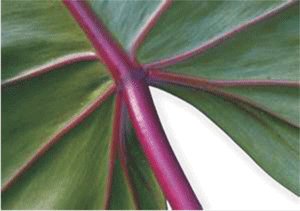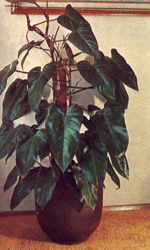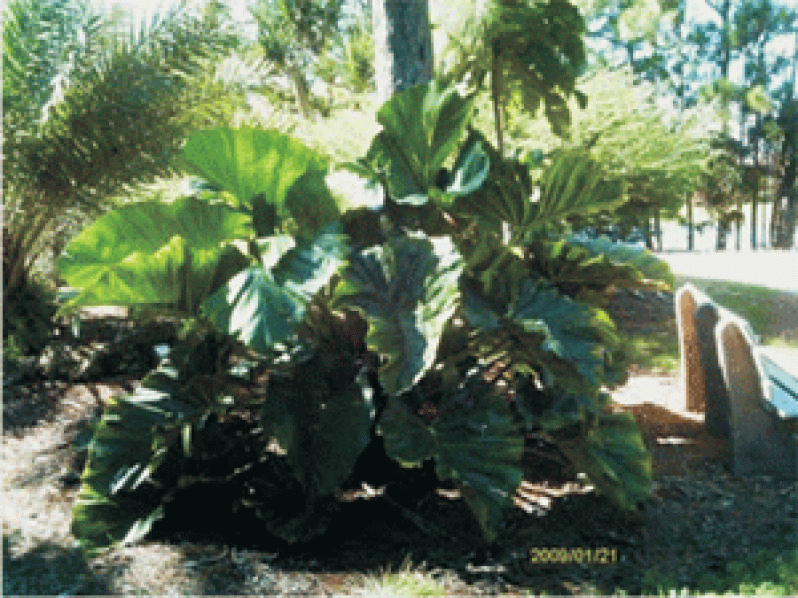He that hath an ‘ear, hath a beauty
MOST gardeners know that to beautify a garden takes more than flowers alone. There is the category of plants known as foliage plants, which are grown for their distinctive cluster of leaves that blend with the flowering plants in the garden, and add a feeling of ‘the tropics being indoors’.  The Philodendron, also known as Elephant’s Ear, is one such plant. The name Philodendron comes from the Greek words, “philo”, or “love”, and “dendron”, which means “tree”.
The Philodendron, also known as Elephant’s Ear, is one such plant. The name Philodendron comes from the Greek words, “philo”, or “love”, and “dendron”, which means “tree”.
The Philodendron is native to the tropical Americas, and is part of the Araceae family, which includes other popular plants, such as the Peace Lily and the Flamingo flower.
Peculiar characteristics
The plant is a shrub that grows upright; and as the popular name Elephant’s Ear suggests, the leaves of many of the varieties are large and deeply lobed.
They come in a variety of shapes: heart, oblong, long and narrow, deep lobed, arrow and ovate.
The distinctively large and imposing leaves are glossy and usually green in colour; and may sometimes have an underside toned copper red, and veins that are red in colour. In the early stages of development, the leaves of some species are red, but turn green as they mature.
Philodendrons display a wide variety of beautiful foliage for landscaping, and with adequate light and the right foliage, will even bear flowers similar to the Calla lilies.
Generally, the Philodendron has been described by many gardeners as one of the most beautiful foliage plants in the  plant kingdom. The Philodendron emerald red in particular, with its large, bold foliage and deep red stems, will command attention in any garden or indoor setting. Once properly planted, they do not need much maintenance.
plant kingdom. The Philodendron emerald red in particular, with its large, bold foliage and deep red stems, will command attention in any garden or indoor setting. Once properly planted, they do not need much maintenance.
Although there are several hundred species of Philodendrons, there are essentially two basic types: the climbing varieties; and the self-heading, or non-climbing, types. Some species of these plants can grow into massive, tree-swallowing specimens in the wild, but adapt well to being grown on a post in the house, or on walls in a garden.
Local horticulturalist, Hans Neher suggests that this plant grows best in shady places, away from the sun; for example, under trees. He says that a real gem can be prepared in the garden when you place an old log of at least 12 inches in diameter, with a length of a little over eight feet, under a shade tree and plant your Philodendron onto it. Over time, you will see the Philodendron’s air roots growing along the log, and the plant’s leaves can grow to become in excess of three feet, giving the garden “a real rainforest ambience”.
Moreover, gardeners can create a small breathtaking “jungle corner” in the garden with short-leaf-growing sansevierias (about 30 plants) and African violets (about 20 plants), mixed with a bunch of impatiens (about 40 plants) and maybe some other colourful, flowering, shade-loving plants. He, however, added: “Since we in Guyana are experiencing more than double as much rain as the countries up North, it is advised that when (Philodendrons) are used for landscaping, they are planted on a 12-inch-high mound prepared with little clay but sand and plenty of mulch. Also, feed the Philodendron with decaying materials.
“Give the plant a handful of 15-15-15 granular fertilizer once every three months; and when expecting visitors, you want to impress, spray the leaves with liquid fertilizer to enhance their gloss and visual beauty.”
The Philodendron plant, and as much advice as you will need on its cultivation, care and maintenance, is available at top local horticulturalists, the #1 Plant Shop on Sheriff Street, Campbellville, Georgetown, which can also be reached by telephone on #227-8094.



.jpg)









